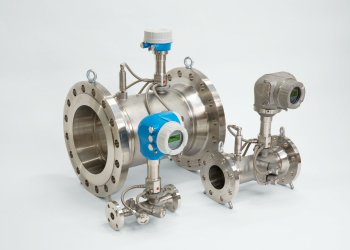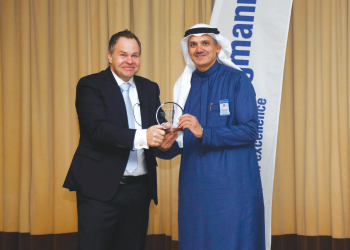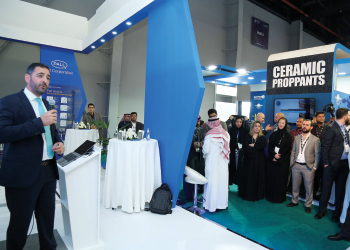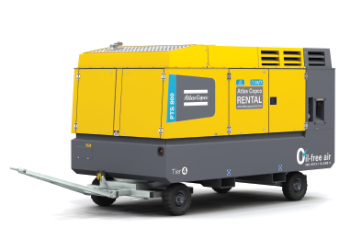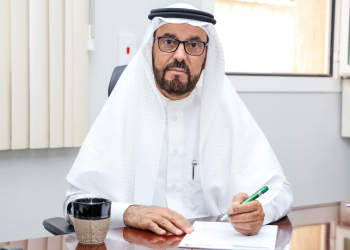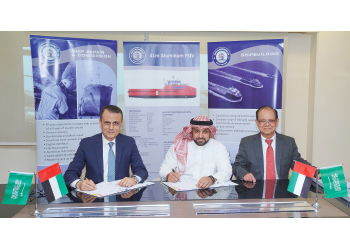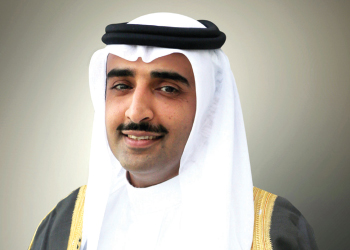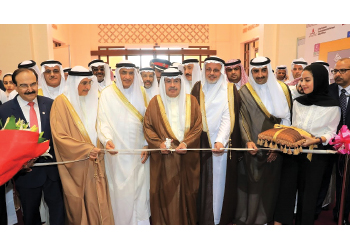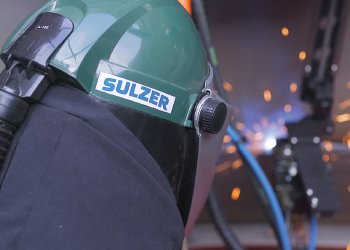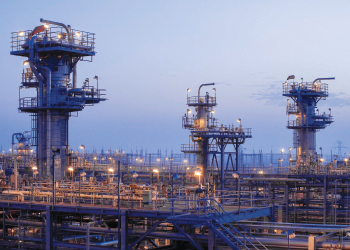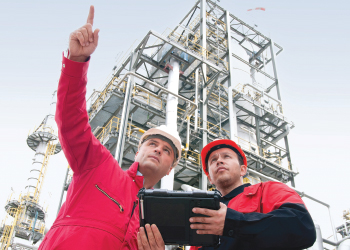
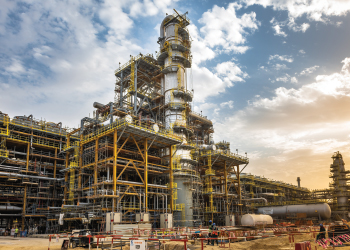 The Fadhili Gas Plant Project ... Saudi Arabia plans to increase domestic gas production
The Fadhili Gas Plant Project ... Saudi Arabia plans to increase domestic gas production
Saudi Arabia is still betting on earnings from oil, however, cautiously. Running in parallel is an ambitous non-oil diversification programme it hopes will shore up revenues
Hydrocarbons will continue to dominate Saudi Arabia’s economy, despite the oil sector shrinking 3.6 per cent in 2019, hit by a drop in oil production.
Many a global impact of events, including trade tensions, geopolitical risks, and the outbreak of the new coronavirus, are potential risks that could weigh heavily on the oil sector.
Saudi’s economy is strongly linked to the revenues generated from its oil sales, which have remained roughly 80 per cent of total government revenues between 2009 and 2018.
But the kingdom is looking for ways to strengthen its non-oil profile to sustain long-term growth. This is also a key objective of the Saudi Vision 2030, which puts the non-oil sector at the heart of the country’s economic development. Reducing its reliance on the oil sector is vital for the country’s economic diversification.
The vision’s key economic goals include increasing the private sector’s contribution to gross domestic product (GDP) from 40 to 65 per cent, raising the share of non-oil exports in non-oil GDP from 16 to 50 per cent, and reducing the unemployment rate from 11.6 per cent to 7 per cent by 2030.
It also aims to maximise local content by localising more than $70 billion of content through programmes such as In-Kingdom Total Value Add (IKTVA) Programme, make economic agents more efficient and increase government revenues by removing domestic energy subsidies and introducing other non-oil revenue items, enabling further government investment. Developing the Kingdom’s non-oil sector would help it to meet these targets.
According to the Governor of the Saudi Arabian Monetary Authority, Ahmed al-Kholifey, monetary, fiscal and structural policies are all geared towards an expansion of the private non-oil sector GDP over the medium term.
Saudi Arabia’s Public Investment Fund (PIF) has been tasked with spearheading many of the reforms and projects associated with Vision 2030.
The Vision also promotes the privatisation of public services and government-owned assets. A significant event here has been the initial public offering (IPO) of state-owned energy giant Saudi Aramco.
Shares in Aramco were listed on the Saudi Stock Exchange (Tadawul) in December 2019. Aramco has hit a valuation of more than $2 trillion.
But while that happens, significant efforts are being made for oil and gas expansion. Early this year, Saudi Arabia and Kuwait agreed to restart oil production at the Neutral Zone, where the Khafji and Wafra fields can together produce some 500,000 barrels of oil per day (bpd).
Also recently, Saudi Arabia’s national oil company, Saudi Aramco, launched the biggest shale gas development outside of the US. Part of this is the Jafurah unconventional gas field in the Eastern Province, where the volume of gas resources is estimated at 200 trillion cu ft.
GlobalData in its report, ‘Saudi Aramco After IPO – Company Overview and Development Outlook’ has revealed five major expansion projects – four crude and one natural gas – are being planned to boost output in the country.
One eighth of the world’s crude oil from 2016 to 2018 was produced by Saudi Arabia’s national oil company, Saudi Aramco. In 2018, the company’s MSC capacity (maximum barrels of crude oil that can be produced during a year) was 12 million barrels per day (bpd) with 10.5 million bpd oil produced plus the remaining 1.5 million bpd available as spare capacity. This capacity allows flexibility to respond to market supply and demand fluctuations. The new expansions will add 1.45 million bpd additional oil capacity.
In another report by Rystad Energy, a hydrocarbon production boom is under way in the Middle East, and this time, the race is spilling into offshore waters. It said Saudi Arabia investment could reach $300 million or more based on the results of the feasibility study from their Red Sea and other offshore areas.
FOCUS ON GAS
Gas has gained significant focus in the energy sector, especially now since the kingdom’s natural gas demand has outstripped its domestic production, forcing the government to impose rations on consuming sectors, and raising expectations that natural gas production and prices in the country will increase over the next decade.
The King Abdullah Petroleum Studies and Research Center (Kapsarc) in a paper last year said the share of natural gas used in power generation in the country grew from 44 per cent to 54 per cent between 2010 and 2017. Natural gas consumption in Saudi Arabia represents 37 per cent of the country’s primary energy demand.
It said Aramco plans to double the Kingdom’s natural gas production and to boost its infrastructure network by 2030. This expansion strategy would cost $150 billion and may include the possibility of importing gas.
 |
Last month, Saudi Aramco announced launching the biggest shale gas development outside of the US to boost domestic gas supply and end the burning of oil at its power generation plants.
Saudi Arabia has for years battled for market share with rapidly expanding shale oil producers in the US. It has now decided to adopt the techniques developed in US fields for the huge $110-billion Jafurah shale gas field project in the Eastern Province. This is the largest unconventional non-associated gas field in the kingdom running 170 km long and 100 km wide.
If Aramco hits its targets for development of the field, Saudi Arabia would become the world’s third largest gas producer by 2030 alongside the US and Russia.
Amin Nasser, Saudi Aramco’s CEO, told Reuters Aramco had developed fracking using seawater, which will remove the obstacle that a lack of water supply represents to fracking in the desert.
"A new shale revolution is taking place (in Saudi Arabia), it’s commercial and we are using seawater," in the fracking process, he said.
To prop up gas development, Aramco also looks to add overseas gas assets to its international energy portfolio.
In May last year, Sempra Energy and Saudi Aramco signed a heads of agreement (HOA) to negotiate and finalise a 20-year liquefied natural gas (LNG) sale-and-purchase agreement for 5 million tonnes per annum (Mtpa) of LNG offtake from Phase 1 of the Port Arthur LNG export-project under development. It also includes the negotiation and finalisation of a 25 per cent equity investment in Phase 1 of Port Arthur LNG.
Nasser called the agreement with Sempra LNG a major step forward in Aramco’s long-term strategy to become a leading global LNG player.
While Sempra is by far the most advanced of all Aramco initiatives in this space, it is not the only one. Aramco is reportedly in the market for potential offtake and joint investments with other LNG players around the world.
Diversifying Aramco’s portfolio to include LNG opens up opportunities for the company, as many of the Kingdom’s crude and products partners are also growing LNG consumers. This is especially important given that some of the Kingdom’s largest gas consumers, namely China, Japan, and India, are rapidly moving toward gas and away from oil in their energy mixes.
RENEWABLES
Saudi Arabia has ambitious plans for renewable energy. It is expected that public and private sector investment will rise to more than $30 billion by 2025.
This will unearth a flurry of private sector investment and local manufacturing job creation opportunities, according to a leading regional power sector investor.
Turki Al Shehri; CEO of ENGIE Saudi Arabia, the industrial investor in the integrated water power plant (IWPP) sector, said the Kingdom’s renewables drive will significantly boost its economic diversification programme.
Al Shehri’s forecast comes as Saudi Arabia pursues an energy mix strategy that comprises 30 per cent renewables and 70 per cent gas by 2030.
"The objective will be to retire liquid burning plants and switch newer plants to burn gas instead of liquids. Renewables will comprise 16 GW wind, 40GW solar, and 2.7 GW concentrated solar power."
DECARBONISATION
Latest data shows Saudi Arabia to have moved from fourth place to the third fastest reducer of greenhouse gasses among the G20 countries for 2018, behind Brazil and France.
According to Enerdata, a research agency on energy efficiency, 2018 data estimates show Saudi Arabia’s total carbon dioxide (CO2) emissions have fallen by 4.4 per cent or 26 million tonnes of CO2 (MtCO2) from 579 MtCO2 to 553 MtCO2 in 2018. The previous estimate was a 2.4 per cent reduction (15 MtCO2).
KAPSARC attributed the reduction to factors including:
• A stronger fall of 5.48 per cent in the economy’s energy intensity, which was responsible for 81 per cent of the reduction in CO2 emissions.
• A 1.3 per cent fall in the carbon intensity of the energy supply, which was responsible for 19 per cent of the reduction.
In 2018, Saudi Arabia’s emissions were stable or declining in all energy consuming sectors of the economy, with transport delivering the majority of the reductions, falling by 13.25 MtCO2 or 11 per cent compared with the year before. The share of natural gas in the fuel mix, which is 25 per cent less carbon intensive than oil, has risen from 32 per cent in 2015 to 38 per cent in 2018.



















































































